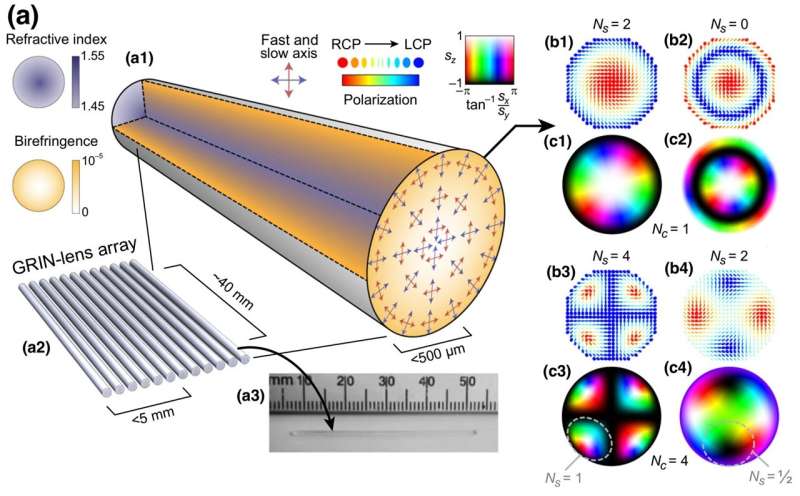This article has been reviewed according to Science X's editorial process and policies. Editors have highlighted the following attributes while ensuring the content's credibility:
fact-checked
peer-reviewed publication
trusted source
proofread
Topologically controlled multiskyrmions: Researchers propose a new family of quasiparticles

Skyrmions are topologically protected quasiparticles with sophisticated spin textures, widely studied in condensed-matter systems, magnets and recently in photonics, which predicts great potential in ultra-high-capacity information storage, due to their diversified and stable topological spin textures in ultrasmall particle-like region.
Motivated by the demand for ultra-capacity information carriers, emerging research seeks to create and control more complex quasiparticles with higher-order extended topological textures in addition to the fundamental skyrmions, such as the transformable meron lattices and skyrmion bundles in chiral magnets, skyrmion bags with large topological charges and heliknotons with complex knots in liquid cystals, to name a few.
However, these topological textures all exist as steady states in materials, which may be perfect for solid-state information storage but impossible for long-range dynamic information transfer.
Recent studies of optical skyrmions (Nature Photonics) may solve this problem. Importantly, the topological spin textures can be created in higher-dimensional structured light fields (Light: Science & Applications), and open new direction of topologically stable long-range large-capacity optical communications to revolutionize our information society.
Therefore, the emergence of new forms of optical quasiparticle with extended topological structures and orders are always highly desired and promising the expansion of fundamental and applied physical frontier.
In a paper published in Physical Review Applied, an international collaboration proposed a new family of quasiparticles, termed multiskyrmions, which possess multipole-like extended configurations with increasingly complex new topologies and controlled by multiple topological orders, beyond the limit of normal skyrmions.
In addition, researchers present the experimental generation and flexible control of a large range of on-demand topological states by a photonic technique. Moreover, the standard skyrmions are usually produced by exotic structured materials such as chiral magnetics, plasmonic systems.
They show that their new quasiparticle alphabet can be constructed from simple GRIN lenses, lending to immediate and widespread implementation, and in more compact systems.
Moreover, the photonic quasiparticles in GRIN lenses can be coupled to free-space optical systems, realizing a long-range transport of controlled topologies.
Based on this advantage, the team proposes a practical quasiparticle-based information transfer protocol of ultra-capacity encryption, where the multiple topological numbers of diversified quasiparticles are used to encode and transfer information with robust topologies against environmental perturbations.
In addition, the capacity and channels in this scheme can be flexibly spanned by arranging the GRIN-lens/quasiparticle array, beating the current optical communication methods.
"We believe this work is a milestone. As skyrmions or quasiparticles in magnets already raised the revolution of ultra-capacity steady data storage, while, our work start to face the challenge and open new research direction of skyrmion-based informatics from steady storage to dynamic transport. Our method lends integrated and programmable solutions of complex particle textures, with impacts on both photonic and general condensed-matter systems for revolutionizing topological informatics and logic devices," the scientists said.
More information: Yijie Shen et al, Topologically controlled multiskyrmions in photonic gradient-index lenses, Physical Review Applied (2024). DOI: 10.1103/PhysRevApplied.21.024025. On arXiv: DOI: 10.48550/arxiv.2304.06332
Journal information: Physical Review Applied , Light: Science & Applications , Nature Photonics , arXiv
Provided by Chinese Academy of Sciences





















